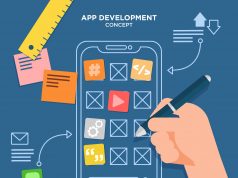In today’s digital landscape, the role of User Interface (UI) and User Experience (UX) designers has become pivotal. They are the architects behind the intuitive and visually appealing aspects of applications and websites. However, finding the right UI/UX designer can be a challenging task, especially when considering remote hiring. In this blog, we will explore some common mistakes that businesses often make when hiring UI/UX designers in the US and provide insights on how to avoid them.
Importance of UX Designers
In the contemporary digital landscape, User Experience designers have emerged as indispensable players in the realm of product development, and their significance extends far beyond just aesthetics. These professionals specialize in crafting the holistic experience that users have while interacting with websites, applications, and various digital platforms. Their work transcends visual appeal and delves into the realm of functionality, accessibility, and usability.
One of the key roles of UX designers is to ensure that the end product is intuitive and user-friendly. They meticulously study user behavior, preferences, and pain points, employing various research methodologies such as surveys, user testing, and analytics. By doing so, UX designers can identify areas of improvement and implement changes that enhance the overall user journey. In essence, they are the architects of seamless and efficient digital experiences that keep users engaged and satisfied.
Moreover, the impact of UX design on a business’s success cannot be overstated. It directly influences user retention, conversion rates, and customer satisfaction. A well-designed user experience can translate into higher user engagement, increased brand loyalty, and ultimately, improved profitability. In a highly competitive digital landscape, where users have endless options at their fingertips, businesses that invest in UX design gain a significant edge. Therefore, recognizing the importance of UX designers and their expertise is not just a trend but a strategic imperative for any organization striving for digital excellence in the USA or anywhere else in the world.
Neglecting to Define Clear Job Roles and Responsibilities
Neglecting to define clear job roles and responsibilities when hiring a UI/UX designer, especially in a remote hiring scenario, can have far-reaching consequences. Firstly, it hinders the recruitment process by obscuring the critical skills and qualifications needed. Without a well-articulated job description, HR teams and hiring managers may struggle to identify the most suitable candidates, leading to a mismatch between the designer’s skills and the job’s requirements. This lack of clarity can deter highly qualified professionals from applying, as they may be unsure whether they possess the necessary qualifications.
Moreover, the absence of clear job roles and responsibilities can impede the designer’s performance once they join the team. Without a defined roadmap of their tasks and expectations, designers may feel disoriented or overwhelmed, making it challenging for them to meet project deadlines and achieve their objectives. This can result in inefficiencies, errors in project execution, and a strained working relationship between the designer and the hiring organization. To prevent these issues, it is imperative for companies to invest time and effort in crafting comprehensive job descriptions that encompass not only the technical skills required but also the specific projects, responsibilities, and goals that the designer will be accountable for. By providing such clarity, organizations not only attract the right talent but also facilitate a more productive and harmonious working partnership.
Not setting clear expectations

Here are the key points regarding the mistake of “Not setting clear expectations” when hiring UI/UX designers:
Detailed Project Scope:
Clearly defining the project’s scope entails outlining the specific features, functionalities, and objectives that the design should address. This not only prevents scope creep but also ensures that designers focus on the most critical aspects of the project.Explicit Timelines:
Setting clear timelines with milestones and deadlines helps in managing project progress. This includes establishing a timeline for initial drafts, revisions, and final deliverables. It’s essential to consider any dependencies on other teams or external factors that could impact timelines.Effective Communication Channels:
Designers need to know how and where to communicate with team members, stakeholders, and clients. Providing guidelines for email, project management tools, or communication platforms fosters efficient and organized interactions.Measurable Objectives:
Defining key performance indicators (KPIs) or success metrics helps gauge the success of the design project. Whether it’s increased user engagement, higher conversion rates, or improved user satisfaction, having quantifiable goals clarifies the project’s purpose.Structured Feedback Process:
Establishing a structured feedback process ensures that feedback from stakeholders is constructive and actionable. Designers should know who provides feedback, when to expect it, and how revisions will be handled. This prevents misunderstandings and excessive back-and-forth revisions.
By addressing these key points, organizations can avoid the common pitfall of not setting clear expectations, resulting in smoother UI/UX design projects that align with business goals and timelines.
Skipping a Thorough Portfolio Review
Skipping a thorough portfolio review can be a costly mistake when hiring a UI/UX designer in the US. A candidate’s portfolio is a window into their skills, experiences, and design approach. Here are five key points explaining why overlooking this vital step can lead to suboptimal hiring decisions:
Inadequate Skill Assessment:
By not thoroughly reviewing a designer’s portfolio, you risk hiring someone whose skills may not align with your project needs. A portfolio showcases a designer’s proficiency in various design aspects, from wireframing and prototyping to visual design. Overlooking this means missing out on essential insights into their abilities.Lack of Fit with Your Project:
Every project has its unique requirements and challenges. A portfolio review helps you gauge if a designer’s previous work aligns with your project’s scope, industry, and target audience. Skipping this step may lead to hiring a candidate who lacks relevant experience.Assessment of Creativity and Innovation:
A UI/UX designer’s creativity and innovative thinking are vital for creating engaging and user-friendly interfaces. A comprehensive portfolio often reveals a designer’s ability to think outside the box and solve complex design problems creatively. Ignoring portfolio evaluation might result in hiring a candidate with a more conventional approach.Consistency and Quality:
Consistency in design quality is crucial for maintaining a strong user experience across your project. A portfolio review helps you assess if a designer consistently delivers high-quality work or if there are inconsistencies that could impact your project’s outcome.Understanding of User-Centered Design:
Effective UI/UX design revolves around a deep understanding of user-centered principles. A designer’s portfolio can provide insights into their user-focused approach, showcasing their ability to create designs that prioritize user needs and preferences. Failing to review portfolios might mean overlooking designers who excel in this crucial aspect.
A thorough portfolio review is an indispensable step when hiring a UI/UX designer in the US. It enables you to assess a candidate’s skills, project fit, creativity, consistency, and commitment to user-centered design – all of which are pivotal for successful project outcomes.
Relying Exclusively on Interviews

Relying exclusively on interviews when hiring a UI/UX designers in the US can be a common yet significant mistake. While interviews are undoubtedly an essential part of the hiring process, they should not be the sole determinant of a candidate’s suitability. Interviews often focus on a candidate’s soft skills, personality fit, and communication abilities but might overlook crucial aspects such as technical skills, design process, and the ability to perform under pressure. This approach can lead to misjudging a candidate’s true potential, favoring certain biases, and lacking tangible evidence of a designer’s past work. To make informed hiring decisions, it’s crucial to complement interviews with other evaluation methods, such as portfolio reviews and skills assessments, ensuring a comprehensive assessment of a candidate’s suitability for the role.
Ignoring the Importance of Communication Skills
Here are five important points with more information on why ignoring the importance of communication skills when hiring a UI/UX designer in the US can be a significant mistake:
Collaboration is Key:
UI/UX designers often work in cross-functional teams, including developers, product managers, marketers, and more. Effective communication is essential for sharing ideas, understanding project requirements, and aligning everyone’s efforts toward a common goal.User-Centered Design Demands Clarity:
UX design revolves around creating products that meet users’ needs and preferences. To achieve this, designers must gather insights from users and stakeholders, translate them into design solutions, and convey these concepts clearly to the team. Without strong communication skills, this process becomes challenging.Feedback Loops Require Listening:
Continuous improvement is a core principle of UX design. Designers need to actively seek feedback, both from team members and end-users, to refine their work. Good communication skills facilitate this process by enabling designers to listen, understand, and act on feedback effectively.Client and Stakeholder Relationships:
In many cases, designers need to interact directly with clients or external stakeholders. Clear and professional communication is essential to build trust, manage expectations, and ensure the project stays on track.Documentation and Reporting:
Designers are often required to document their design decisions, create user personas, wireframes, and prototypes, and present these materials to various audiences. Communication skills are vital for creating coherent and persuasive documents and presentations.
Neglecting communication skills in the hiring process for UI/UX designers can lead to issues in collaboration, understanding user needs, receiving and acting on feedback, managing client relationships, and effectively documenting design work. To avoid this common mistake, assessing a candidate’s communication abilities is crucial to ensure they can excel in all aspects of the UI/UX design role.
Disregarding a Test Project or Trial Period
Disregarding the importance of a test project or trial period when hiring a UI/UX designer in the US can be a critical oversight. These trial periods serve as a practical litmus test for a designer’s abilities and how well they fit within your team. It’s in these real-world scenarios that you can gauge their problem-solving skills, creativity, and adaptability, which might not be fully evident in interviews or portfolios. This hands-on approach helps ensure that the selected designer possesses the technical competence and innovative thinking necessary to excel in your projects.
Furthermore, test projects or trial periods offer a unique opportunity to assess a candidate’s cultural compatibility. The world of UI/UX design is often collaborative, requiring designers to work closely with developers, product managers, and clients. By integrating a candidate into your team for a brief period, you can evaluate their interpersonal skills, teamwork, and adaptability within your organization’s specific work environment. This immersive experience not only enables you to make a more informed hiring decision but also allows the candidate to familiarize themselves with your company’s values and dynamics, paving the way for a smoother transition into the role.
Incorporating test projects or trial periods into your hiring process is a prudent approach to hiring a UI/UX designers. It ensures that you not only assess their skills but also evaluate how well they mesh with your team and understand your company’s culture, ultimately reducing the risks associated with a full-time hire and setting the stage for successful design endeavors.
Conclusion
In the competitive realm of UI/UX design, hiring the right talent is paramount, but it’s equally crucial to avoid common mistakes in the process. This blog has underscored the significance of UI/UX designers in crafting exceptional user experiences, emphasizing the importance of clear job roles, setting expectations, portfolio reviews, cultural fit assessments, and the integration of test projects in the hiring process. These insights serve as a guide for organizations and businesses looking to bolster their design teams while minimizing pitfalls. By steering clear of these common mistakes and embracing best practices, remote hiring in the US can become a more streamlined and successful endeavor, ultimately leading to the creation of remarkable digital experiences that resonate with users and drive success.
Read more:



















Hello there, I found your blog by the use of Google at the same time as looking for a similar matter, your website got here up, it seems to be great. I’ve bookmarked it in my google bookmarks.
Hello there, simply was aware of your weblog via Google, and found that it’s really informative. I’m gonna watch out for brussels. I will be grateful for those who proceed this in future. A lot of people will likely be benefited from your writing. Cheers!
Comments are closed.